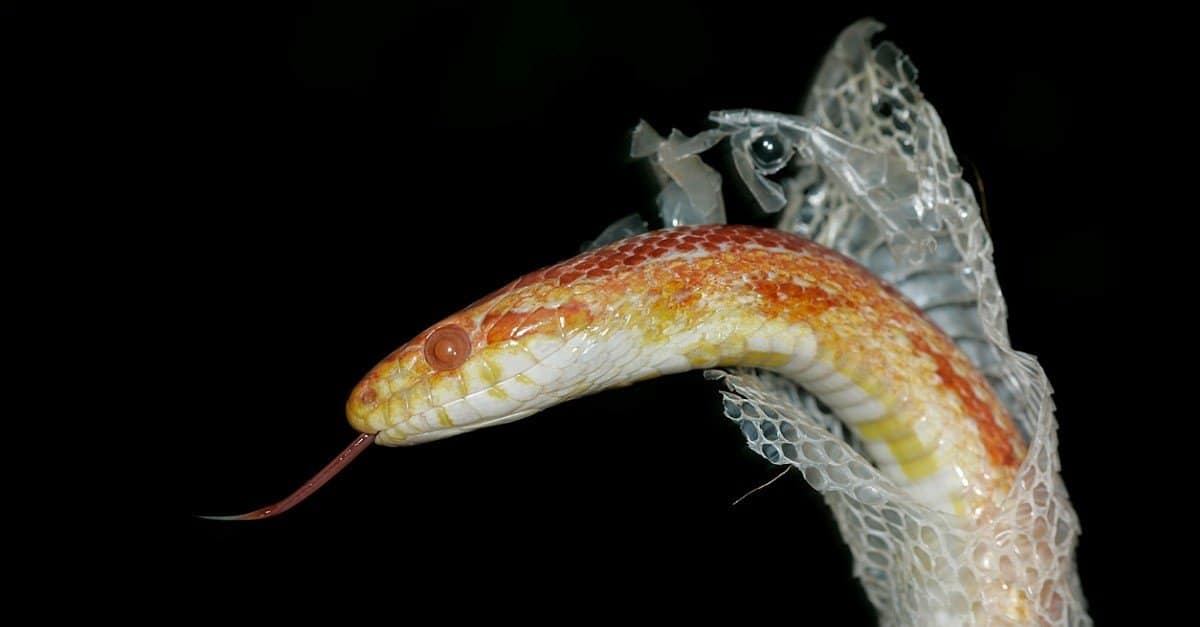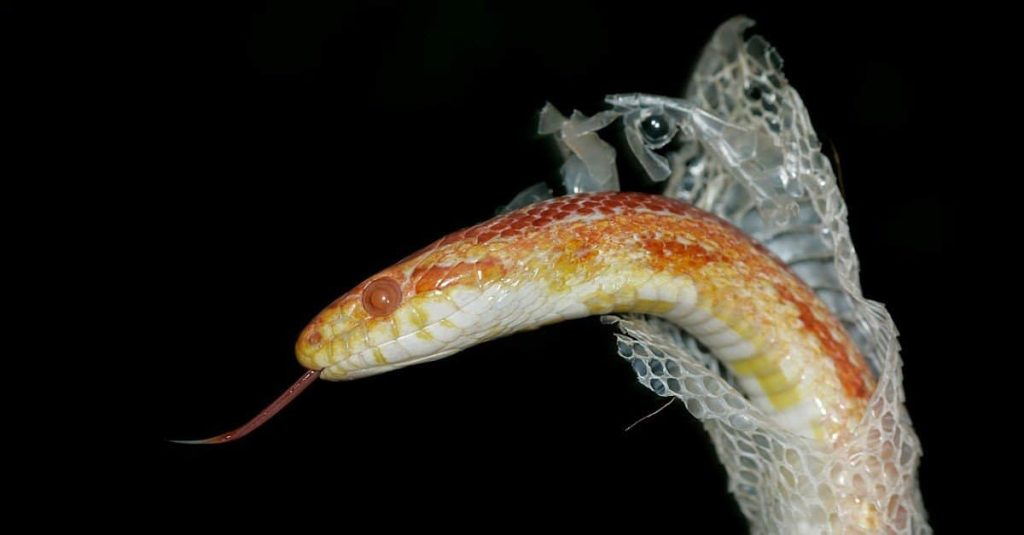Rattlesnakes are some of the most fascinating creatures in the animal kingdom, known for their distinctive rattle and venomous bite. But have you ever wondered how often they shed their skin? For these reptiles, shedding is a natural process that allows them to grow and adapt to their environment. In this article, we’ll take a closer look at the shedding habits of rattlesnakes and explore what you can do to help them thrive in the wild. So, let’s get started and discover the secrets of these amazing creatures!
Rattlesnakes typically shed their skin 2-4 times per year, depending on factors such as age, growth rate, and environmental conditions. Younger snakes shed more frequently than older ones, and snakes in captivity may shed more often due to consistent temperature and humidity levels. During the shedding process, the snake’s eyes may appear cloudy or blue, and it may be more irritable or lethargic than usual.

How Often Do Rattlesnakes Shed Their Skin?
Rattlesnakes are fascinating creatures that are known for their distinctive rattle sound created by their tail. Shedding their skin is a natural process that allows them to grow and stay healthy. In this article, we’ll explore how often rattlesnakes shed their skin and why it is essential for their survival.
What is Skin Shedding?
Skin shedding, also known as molting or ecdysis, is a process where reptiles like rattlesnakes shed their old skin to make way for new growth. Like humans and other animals, reptiles have skin that grows and changes over time. Unlike us, however, reptiles can’t just grow new skin on top of the old. Instead, they have to shed their entire outer layer of skin to make way for the new growth underneath.
Rattlesnakes, like all snakes, shed their skin in one piece. This process is known as sloughing. As they grow, their skin becomes tight, and they need to shed it to make room for new growth.
How Often Do Rattlesnakes Shed Their Skin?
The frequency of skin shedding in rattlesnakes varies depending on their age, diet, and environment. Younger snakes tend to shed more frequently than older ones as they are still growing. Adult rattlesnakes shed their skin once or twice a year. In some cases, they may shed more often if they have sustained an injury or if they have been exposed to parasites.
The shedding process usually takes between 7 to 14 days to complete, with the new skin underneath taking about a week to harden. During this time, the snake is vulnerable to attack and may not move around much, so it’s essential to give them space and avoid disturbing them.
Why is Skin Shedding Important for Rattlesnakes?
Skin shedding is essential for rattlesnakes as it allows them to grow and stay healthy. As they shed their skin, they also shed any parasites or old skin that may have been damaged or infected. This process helps to prevent infections and diseases from spreading throughout their body.
Shedding their skin also allows rattlesnakes to regulate their body temperature. As they shed, they remove the old layer of skin that may be preventing heat from escaping their body. This allows them to cool down and avoid overheating, which can be fatal for them.
Benefits of Rattlesnake Skin Shedding
There are several benefits to rattlesnake skin shedding, including:
- Removes old or damaged skin
- Helps regulate body temperature
- Prevents infections and diseases
- Allows for growth and new skin to develop
- Helps maintain healthy skin and scales
Rattlesnake Skin Shedding vs. Other Reptiles
Rattlesnakes are not the only reptiles that shed their skin. All snakes, lizards, and other reptiles do it. However, the frequency of shedding varies depending on the species. For example, some snakes may shed once a month, while others may shed once a year. Lizards tend to shed more frequently than snakes, with some shedding their skin every few weeks.
Another difference between rattlesnakes and other reptiles is the way they shed their skin. Rattlesnakes shed their skin in one piece, while lizards and other reptiles shed in several smaller pieces.
Conclusion
Rattlesnakes are incredible creatures that shed their skin to grow and stay healthy. Shedding their skin is a natural process that allows them to remove old or damaged skin, regulate their body temperature, and prevent infections and diseases. While it may be a vulnerable time for them, it’s essential to give them space and avoid disturbing them during the shedding process.
Frequently Asked Questions
What is the purpose of shedding skin for a rattlesnake?
Shedding skin is a vital process for the health of a rattlesnake. It allows them to grow and replace any damaged or old skin. The shedding process also helps to remove any parasites that may be living on the snake’s skin, keeping them healthy and free from disease.
Most rattlesnakes shed their skin several times a year, depending on their age and environment. Younger snakes tend to shed more frequently than older ones, as they are still growing and developing. Environmental factors such as temperature and humidity can also affect how often a rattlesnake sheds.
What are the signs that a rattlesnake is about to shed its skin?
There are several signs that a rattlesnake is about to shed its skin. One of the most noticeable is a change in color or appearance. The snake’s skin may become dull or cloudy, and it may appear to have a bluish or milky tint. The eyes of the snake may also become cloudy or blue during this time.
As the shedding process begins, the snake may become more inactive and spend more time hiding. It may also stop eating for a few days, as its body focuses on shedding the old skin. Once the snake has shed its skin, it will often be more active and alert, as it feels lighter and more comfortable in its new skin.
Can you help a rattlesnake shed its skin?
No, it is not recommended to interfere with a rattlesnake’s shedding process. This is a natural and important process for the snake’s health, and it should be allowed to occur without disturbance. Attempting to help a rattlesnake shed its skin could cause injury or stress to the snake, which could be harmful to its health.
If you encounter a rattlesnake that is shedding its skin, it is best to observe from a safe distance and allow the snake to complete the process on its own. If the snake is in an area where it could pose a danger to humans or pets, it is best to contact a professional wildlife removal service for assistance.
What happens to a rattlesnake’s old skin after it sheds?
After a rattlesnake sheds its skin, the old skin is left behind in one piece. The snake will often leave the skin in the area where it shed, and it may be visible as a translucent, papery shell. The old skin is made up of several layers, including the outer epidermis and the inner dermis.
While the old skin may seem like waste material, it can actually be used by other animals for various purposes. For example, birds may use the skin to line their nests, as it provides insulation and protection for their eggs. Small mammals may also use the skin for nesting material or as a source of nutrients.
What should you do if you encounter a rattlesnake that is shedding its skin?
If you encounter a rattlesnake that is shedding its skin, it is important to stay calm and give the snake plenty of space. Do not attempt to touch or handle the snake, as it may be more irritable or defensive during this time.
If the snake is in an area where it could pose a danger to humans or pets, it is best to contact a professional wildlife removal service for assistance. In most cases, it is best to simply observe the snake from a safe distance and allow it to complete the shedding process on its own.
The Incredible Way Snakes Shed Their Skin | Real Wild
In conclusion, the frequency at which rattlesnakes shed their skin is dependent on a variety of factors. These include the age, size, and overall health of the snake, as well as the environmental conditions it is living in. While some rattlesnakes may shed their skin as often as every few weeks, others may only do so once or twice a year.
Despite these differences, one thing is certain: the process of shedding skin is essential to the continued health and well-being of all snakes, including rattlesnakes. Through this process, they are able to rid themselves of old, damaged skin and grow new, healthy scales that provide protection and aid in movement.
Overall, while the shedding of skin may seem like a minor detail in the life of a rattlesnake, it is actually a crucial aspect of their survival and growth. By understanding more about this natural process, we can gain a greater appreciation for these fascinating creatures and the vital role they play in our ecosystem.

